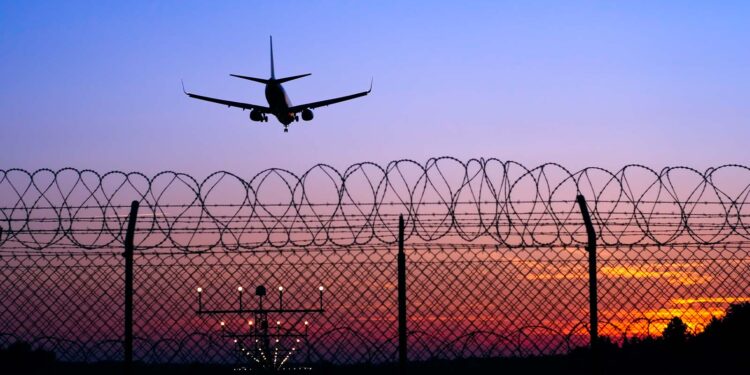Business Aircraft Ops to Military and Joint Use Civil/Military Airfields: Part 2 – Airport Examples

This business aviation blog post continues from our article last week, titled “Business Aircraft Ops to Military and Joint-Use Airfields: Part 1 – General Considerations.”
In some cases, military airports offer attractive options for general aviation (GA) operators for being able to get closer to the passenger destination. With adequate advance trip preparation, working with your trip support provider and local ground handlers, it’s possible to access a fairly wide range of military airfields, as well as military ramps on joint-use civilian/military airports.
The following are examples of military airfields and information regarding operations into and out of the particular location:
1. Agra airfield
Agra (VIAG) is located about 96 NM south of Delhi (VIDP) and is the closest airfield to the historic 17th Century Taj Mahal. No airport slots are required for this location, but you must have prior permission required (PPR). Visitors to the Taj Mahal save about two hours in terms of ground transport, each way, by landing at VIAG rather than VIDP. VIAG requires a minimum of 15 business days advance notification for permits (it had been 30 business days until early 2014), and the airport may not be used as an alternate. In addition to normal aircraft and crew documentation, and standard worldwide insurance, operators need to provide crew/passenger places of birth and home addresses as well as their father’s name. While VIAG has available parking and accommodates larger and widebody GA aircraft, you’ll face a fairly bare bones level of service, infrastructure, ground support equipment (GSE), and in-flight catering options. When operating to any military airport in India, it’s recommended to have a supervisory handling agent brought in to assist with ground services.
2. Northolt airfield
Northolt (EGWU) is probably the world’s most commonly-used military airport for GA. This location is a slot controlled airport of entry (AOE) that welcomes GA operations and is relatively easy to get into. Unlike operations to civilian airfields in the UK, you’ll need to forward all required aircraft and crew/passenger details and documentation to airport authorities in advance, a minimum of 24 hours prior to arrival, in order to secure a PPR. EGWU is open Monday-Friday 0800-2000 local, 0800-1500 local on Saturday, and 1200-1900 local on Sunday. No overtime possible at this airport. Military operations always have priority over GA movements. Widebody and larger aircraft operations are possible, but the runway length is 5545 ft. Be aware that you’ll need to sign a Crown Indemnity (insurance) Waiver in addition to supplying, in advance, aircraft registration and airworthiness certificates, insurance and noise certificate. Schedule revisions are not too challenging at this location.
3. Leuchars airfield
Leuchars (EGQL) in the past permitted GA operators to travel there using similar processes as EGWU. However, authorities have recently changed the regulations to only allow GA aircraft during large golf tournaments. When this airfield is open to GA, the process for a PPR and other requirements is similar to EGWU.
4. Osaka Itami airfield
Osaka Itami (RJOO) is located in the Osaka area, and 23 NM from Osaka (RJBB).RJOO is a military airfield with limited GA access. This is one of the only military airfields in Japan occasionally used by GA. RJOO is not officially an AOE, and access is normally is limited to domestic operations. The local military authority may allow you to do international operations, with advance notification and depending upon the status of your passengers (who, ideally, should be diplomatic officials or government leaders). Plan on at least 10 business days lead time to secure a permit for RJOO, and be aware that this location is not advertised as an AOE.
5. Joint civilian/military airport operations
There are many airports, worldwide, where civilian and military operations share the same airfield. Upon landing you’ll be directed to either the military or civilian side of the field. If you’re able to present valid reasons to use the military side, or military parking area, you may gain approval. Parking availability, on the military side, is generally not an appropriate reason for a permit. Most operators, however, do not choose to use military areas on an airfield as the permit process is more troublesome and services/equipment availability is more limited.
6. Examples of joint-use airfields
Guarulhos (SBGR) and Naples (LIRN) are examples of joint use military civilian airfields. Sometimes, as is the case at SBGR, you may find parking available on the military but not on the civilian side. Using the military side of certain joint use airports may also extend airport operating hour options. You cannot, for example, go into the civilian side of LIRN after hours at night. But, the military-controlled side of the field can keep the airport open for 24 hours operations, at their discretion.
Conclusion
Don’t expect the same levels of service, support and GSE equipment to be available at military airfields or at military ramps on joint-use airports. You can expect the basics – use of a runway, a place to park and fuel – but there may be potential issues with other support services, in-flight catering, and credit unless you use, or reposition, a supervisory handling agent.
Questions?
If you have any questions about this article or would like assistance planning your next trip to a military airfield, contact me at keithforeman@univ-wea.com.




